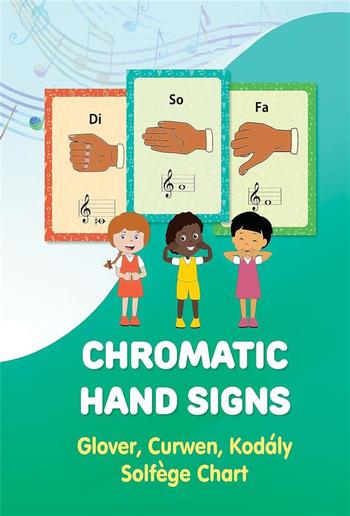
Helen Winter - Chromatic Hand Signs: Glover, Curwen, Kodaly Solfege Chart
Chromatic Hand Signs: Glover, Curwen, Kodaly Solfege Chart
Helen Winter
Descripción
Cut out the gestures charts and use them as a visual aid for yourself, your kids or your students. The size of the cut-out will be 8.5x11 inches. Each note here has its own page in the e-book. You can post these cut-outs on the wall and your children can understand and use them on their own.Solfege (or Sol-fa), Glover, Curwen, and Kodaly hand signs are used in music to represent the different pitches of a tonal scale. By associating hearing and reading of pitches with playing/singing, they establish a physical association between these elements. A singer makes a specified shape with their hand to represent each tone of the seven-note solfege system.This e-book presents the full range of solfege hand signs, both diatonic and chromatic.The following hand signs are included:do, di, re, ri, me, mi, fa, fi, se, sol, si, le, la, li, te, ti, doThe solfege hand sign system was first developed by John Curwen and then modified by Kodály to add chromatic alterations together with upward and downward head movements. Kodaly’s modification allowed children to see the actual height and depth of the pitches. This kinesthetic method of developing aural skills encourages inner hearing – hearing words, melodies, and sounds in our minds without the actual sounds being present.You can make the signs with one hand or both based on your and your students’ preference.One side of the page shows the Kodaly hand sign together with note name and staff position. The reverse shows a human figure illustrating the hand position.Do = In front of the belly buttonRe = In front of the chestMi = Shoulder levelFa = Mouth levelSol = Eye levelLa = Forehead levelTi = Top of head levelHigh Do = Just above head levelThe hand signal for a chromatic note will be at the level between the diatonic note that is before it and after it.Additionally, I include the tonal chromatic ladder to help you visualize the sequences and intervals between the tones in musical scales. This will help with playing and singing.

